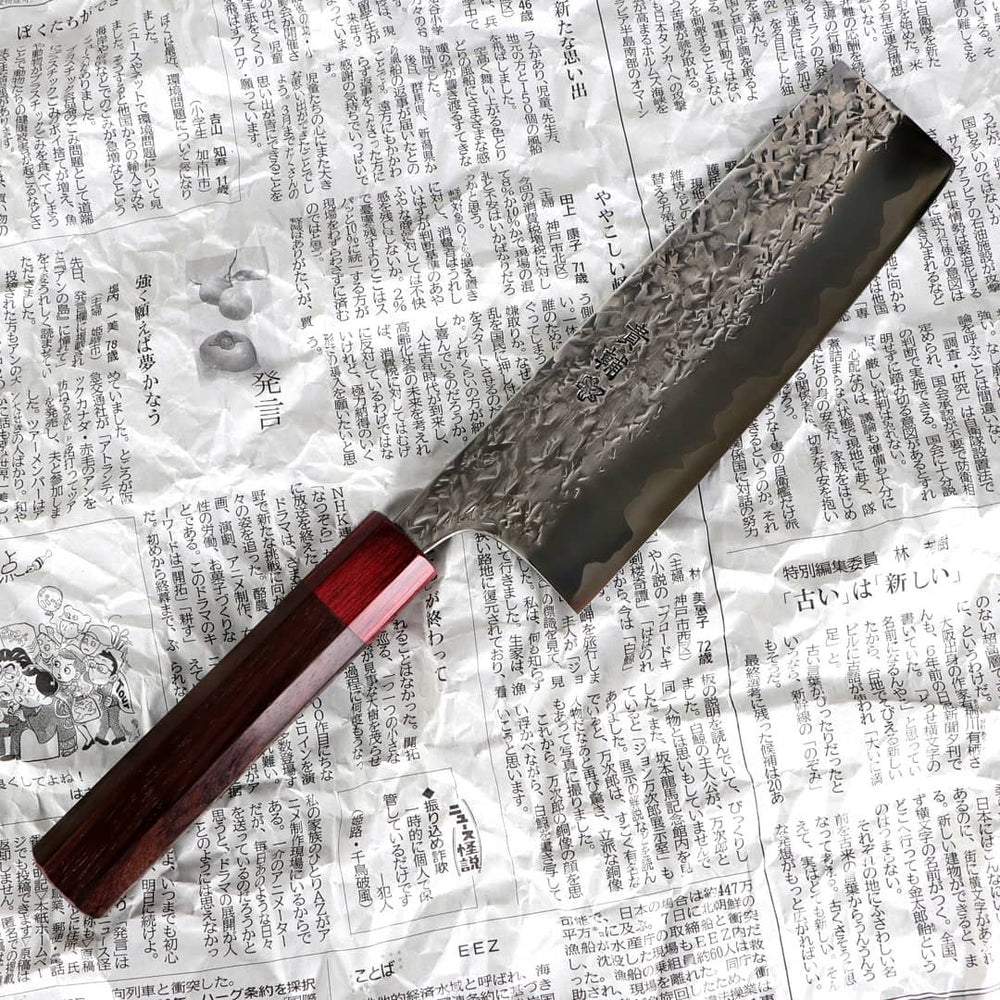Learn to Love Japanese Knives
Working with a Japanese knife in the kitchen for the first time must have felt so impressive that it left a lasting impression on me. To say that I actually remember if it was a Santoku knife or any other Japanese kitchen knife would be fibbing, but it has turned into a great passion. Who doesn't know it: You're a guest at a friend's or family's house and spontaneously decide to prepare a small meal, want to get involved, and ask the host for a chef's knife. What then usually happens is a small tragedy. The host points to a small drawer, from which you are then supposed to take a "knife". Now you have to manage to identify the most suitable knife and get started. First you cut a cucumber, where the knife still works halfway, and then comes the tragedy, the tomato. You put the knife on, can barely cut through the skin and crush the tomato rather than cut it. The whole thing ends then in a liquid tomato juice salad while I have to struggle with strong inner turmoil. Throwing the knife into the trash bin along with tomatoes is what I actually would like to do in these situations.
After the tragedy I try to discuss the unfortunate knife situation in the host's kitchen. Most of the time, my nerves are put to the test again, and I am told that these knives were bought from a German manufacturer and are therefore of the best quality. Carefully, I then try to point out that this German value work is unfortunately nowadays often made in China in a fast-track process and then slowly segue into my raving about hand-forged Japanese knives and what makes a Japanese chef's knife so special. Until then, my audience always seems very interested in what I have to say, until the question comes "..how much does such a knife cost?". With the answer to this question, the interest then often ends abruptly and I reap shocked looks, because most people are not ready at the first moment to spend a hundred euros or more for a Japanese chef's knife. Since words are often a waste of effort in such cases, I prefer to let actions speak and have given away a couple of Japanese knives as presents in the recent years. Many times, on a later visit I find that not only has my gift of a Japanese knife been very well received and displaced the other knives from the kitchen, but that it is now in the company of other hand-forged Japanese knives.
In the meantime, I often experience that the initial skeptic has advanced to a convinced fan of Japanese knives. Then I mentally pat myself on the back and contentedly enter into discussions about Gyuto knives, Bunka knives and Co. and am surprised how intensively one or the other has informed himself about Japanese knife types, knife steels and other properties.



